How is THCA Concentrate Made? The Complete Extraction Process Explained
THCA concentrates represent the pinnacle of cannabis extraction artistry, delivering potent, crystalline products that showcase the raw power of the cannabis plant before decarboxylation. Understanding how THCA concentrate is made requires diving deep into the sophisticated world of extraction science, where chemistry meets craftsmanship to produce some of the most sought-after cannabis products on the market.
The THCA extraction process is far more complex than many realize, involving precise temperature control, specialized equipment, and extensive knowledge of cannabinoid chemistry. Whether you're curious about the science behind your favorite concentrates or considering the intricacies of THCA concentrate production, this comprehensive guide will walk you through every step of the journey from plant to concentrate.
For those seeking premium THCA concentrates produced through these advanced extraction methods, Oregon Hemp Flower's new THCA releases showcase the exceptional quality that results from mastering these sophisticated production techniques.
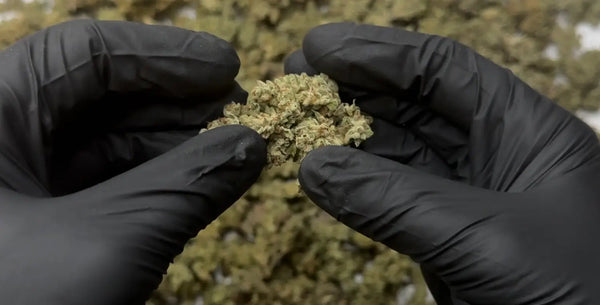
Understanding THCA and Its Extraction Challenges
Before exploring how to make THCA concentrate, it's essential to understand what makes THCA unique among cannabinoids. Tetrahydrocannabinolic acid (THCA) is the non-psychoactive precursor to THC, existing naturally in fresh cannabis plants. Unlike THC, THCA doesn't produce intoxicating effects until it undergoes decarboxylation through heat application.
This temperature sensitivity presents the primary challenge in THCA concentrate extraction techniques. Traditional extraction methods that rely on high temperatures can inadvertently convert THCA to THC, fundamentally altering the final product's properties. Successful THCA extraction requires maintaining low temperatures throughout the process while still achieving efficient cannabinoid separation.
The molecular structure of THCA also influences extraction methodology. Its acidic carboxyl group makes it more water-soluble than THC, affecting how it behaves during various extraction processes. This characteristic requires extractors to carefully balance moisture content, temperature, and processing time to preserve THCA integrity while maximizing yield.
Source Material Selection: The Foundation of Quality
The journey of making THCA concentrates begins long before any extraction equipment is turned on. Source material selection is perhaps the most critical factor determining final product quality, potency, and yield. The ideal starting material for THCA extraction differs significantly from material intended for other concentrate types.
Fresh-frozen cannabis represents the gold standard for THCA extraction. This material is harvested at peak trichome development and immediately frozen, preserving the delicate THCA molecules before natural decarboxylation can occur. The freezing process must happen within hours of harvest to maintain optimal cannabinoid profiles.
Trichome density and maturity play crucial roles in determining extraction potential. Plants harvested slightly earlier in their flowering cycle often contain higher THCA concentrations, as extended flowering can lead to natural decarboxylation. Visual inspection reveals optimal harvest timing through trichome coloration – clear to slightly cloudy trichomes typically indicate peak THCA content.
Strain selection significantly impacts the THCA extraction process outcomes. Certain cultivars naturally produce higher THCA concentrations, while others may offer better extraction characteristics despite lower initial potency. Extractors often maintain detailed databases tracking which strains perform best under specific extraction parameters.
Environmental factors during cultivation also influence extraction success. Plants grown under optimal conditions with proper nutrition, lighting, and environmental control typically yield higher-quality concentrates. Stress factors like temperature fluctuations, nutrient deficiencies, or pest pressure can reduce trichome quality and complicate extraction processes.
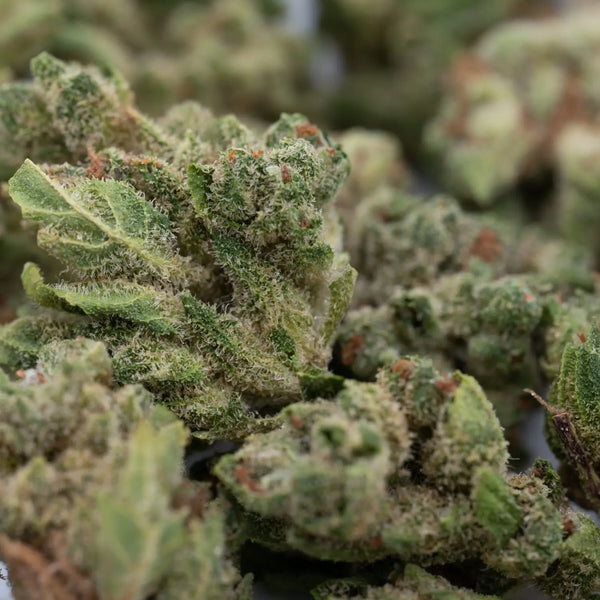
Extraction Methods Overview: Choosing the Right Approach
The landscape of THCA concentrate production encompasses several distinct methodologies, each offering unique advantages and presenting specific challenges. Understanding these different approaches is essential for appreciating how various THCA products achieve their distinctive characteristics.
Solvent-based extraction methods dominate commercial THCA extraction methods due to their efficiency and scalability. These techniques use chemical solvents to dissolve cannabinoids and terpenes from plant material, creating concentrated solutions that are later purged to remove residual solvents. The choice of solvent significantly impacts final product characteristics, extraction efficiency, and post-processing requirements.
Solventless extraction techniques have gained popularity among consumers seeking "cleaner" concentrates without any residual solvents. These methods rely on physical separation techniques using heat, pressure, or mechanical agitation to separate trichomes from plant material. While often producing lower yields than solvent-based methods, solventless techniques can preserve delicate terpene profiles and eliminate solvent residue concerns.
Temperature control represents the unifying challenge across all extraction methods when targeting THCA preservation. Each technique requires specific temperature ranges to maximize cannabinoid extraction while preventing decarboxylation. This balance often involves trade-offs between extraction efficiency and THCA preservation.
Equipment sophistication varies dramatically between extraction methods, from simple rosin presses costing thousands of dollars to closed-loop hydrocarbon systems requiring hundreds of thousands in investment. The THCA concentrate extraction techniques chosen often depend on production scale, budget constraints, and target product characteristics.
Hydrocarbon Extraction: The Industry Standard
Hydrocarbon extraction using butane, propane, or blended solvents represents the most common method for commercial THCA concentrate production. This process leverages the superior solvency power of light hydrocarbons to efficiently extract cannabinoids and terpenes while maintaining low temperatures that preserve THCA integrity.
The process begins with loading cannabis material into extraction columns, which are then flooded with liquid hydrocarbons under pressure. The solvent dissolves cannabinoids, terpenes, and some plant waxes, creating a concentrated solution. Temperature control during this phase is critical – most THCA extractions operate between -20°F to 32°F to prevent decarboxylation while maintaining efficient extraction.
Closed-loop systems are mandatory for safe hydrocarbon extraction, containing all solvents within a sealed system to prevent dangerous accumulation of flammable vapors. These systems recover and recycle solvents, making the process more economical and environmentally sustainable. Modern closed-loop systems incorporate sophisticated monitoring and safety systems to prevent accidents.
The initial extraction produces a crude oil containing dissolved solvents that must be removed through purging processes. Initial purging often occurs in ovens under vacuum to lower solvent boiling points and facilitate evaporation without applying excessive heat. This stage requires careful temperature monitoring to prevent THCA conversion to THC.
Butane extraction typically produces lighter, more terpene-rich concentrates with excellent flavor profiles. The lower boiling point of butane allows for gentler purging conditions, helping preserve delicate terpenes that contribute to concentrate flavor and effects. However, butane can extract more plant waxes, requiring additional refinement steps.
Propane extraction often yields higher overall cannabinoid percentages due to its different solvency characteristics. Propane can operate effectively at even lower temperatures than butane, making it ideal for THCA preservation. Blended butane-propane extractions combine advantages of both solvents, allowing extractors to fine-tune selectivity for specific compounds.
Advanced hydrocarbon THCA extraction methods incorporate techniques like column cooling, material preparation strategies, and specialized purging protocols specifically designed for THCA preservation. Some extractors employ liquid nitrogen cooling systems to maintain ultra-low temperatures throughout the extraction process.
Quality control during hydrocarbon extraction involves monitoring extraction parameters, testing for residual solvents, and verifying cannabinoid potency and profile. Professional facilities maintain detailed logs of all extraction variables to ensure consistent results and identify optimization opportunities.
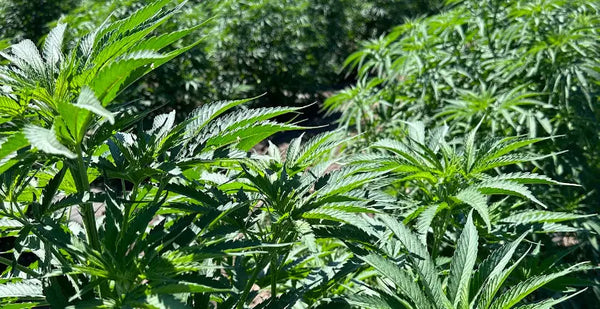
CO2 Extraction: Precision Through Pressure
Supercritical CO2 extraction represents a sophisticated approach to making THCA concentrates that offers precise control over extraction parameters while producing solvent-free final products. This method utilizes carbon dioxide in its supercritical state – where it exhibits properties of both liquid and gas – to selectively extract cannabinoids and terpenes.
The THCA extraction process using CO2 begins with loading cannabis material into high-pressure extraction vessels. Carbon dioxide is pressurized beyond its critical point (approximately 1,070 PSI at 87°F) while maintaining temperatures low enough to preserve THCA. The supercritical CO2 acts as a selective solvent, dissolving cannabinoids while leaving behind unwanted plant materials.
Temperature and pressure control in CO2 extraction allows for remarkable selectivity in compound extraction. Lower temperatures (80-100°F) and moderate pressures favor THCA extraction while minimizing chlorophyll and plant wax extraction. Higher pressures can extract additional compounds, but careful balance is required to prevent THCA decarboxylation.
The extraction process typically involves multiple passes through the plant material, with each pass removing different compound classes. Initial passes often target terpenes and lighter compounds, while subsequent passes extract heavier cannabinoids. This fractionation capability allows producers to create specialized products or recombine fractions for specific effects.
CO2 extraction systems require significant capital investment, often costing hundreds of thousands of dollars for commercial-scale equipment. However, these systems offer excellent consistency, scalability, and the ability to produce pharmaceutical-grade concentrates without any residual solvents. The CO2 solvent is easily removed by simply reducing pressure, leaving behind pure extracted compounds.
Post-extraction processing in CO2 systems often involves winterization to remove extracted waxes and fats, followed by decarboxylation control to manage THCA-to-THC conversion ratios. Some producers deliberately manage partial decarboxylation to create products with specific THCA:THC ratios for targeted effects.
Quality advantages of CO2 extraction include consistent potency, absence of residual solvents, and preservation of delicate terpene profiles when operated correctly. However, the method typically produces lower yields than hydrocarbon extraction and requires more sophisticated equipment and operator training.
Rosin Pressing: The Solventless Solution
Rosin pressing has emerged as a popular method for how to make THCA concentrate without using any chemical solvents. This technique applies controlled heat and pressure to cannabis material, causing trichomes to rupture and release their contents as a concentrated resin that can be collected immediately.
The fundamental principle behind rosin pressing involves applying sufficient pressure to burst trichome heads while using minimal heat to keep the released oils fluid enough to flow away from plant material. For THCA preservation, pressing temperatures typically range from 160°F to 200°F – significantly lower than temperatures used for THC-focused rosin production.
Starting material preparation significantly impacts rosin yield and quality. Fresh-frozen material often produces lower yields but exceptional flavor profiles, while properly cured flower can yield higher percentages of concentrate. Some producers create hash or bubble hash as an intermediate step before pressing, concentrating trichomes before the final pressing stage.
Pressure application requires careful calibration to maximize yield without damaging delicate compounds. Most commercial rosin presses operate between 600-1500 PSI, applied gradually to prevent sudden trichome rupture that could release plant chlorophyll and reduce concentrate quality. Press timing typically ranges from 45 seconds to 3 minutes depending on material type and desired characteristics.
Filter bags or screens often contain plant material during pressing, preventing plant particles from contaminating the final concentrate. Mesh sizes between 25-220 microns are common, with finer meshes producing cleaner concentrates but potentially reducing yields. Some producers use multiple filtration stages to balance cleanliness with yield optimization.
Temperature control throughout the pressing process affects both yield and final product consistency. Lower temperatures preserve more terpenes and prevent THCA decarboxylation but may reduce overall yield. Infrared thermometers help maintain consistent platen temperatures, while some advanced presses incorporate automated temperature control systems.
Collection and storage of fresh rosin requires immediate attention to prevent degradation. Many producers collect rosin on parchment paper or specialized collection surfaces, immediately transferring to cold storage to preserve volatile terpenes and prevent unwanted chemical changes.
Yield expectations for rosin pressing vary widely based on starting material quality, equipment capabilities, and processing techniques. High-quality flower might yield 15-25% by weight, while premium hash rosin can achieve yields of 70-90% from the starting hash material.
Post-Processing: Refinement and Specialization
Post-processing techniques transform crude extracts into the refined THCA concentrate extraction techniques products consumers recognize in dispensaries. These processes require deep understanding of cannabinoid chemistry and specialized equipment to achieve consistent, high-quality results.
Winterization represents one of the most common post-processing steps in THCA concentrate production. This process involves dissolving crude extract in ethanol and freezing the solution to precipitate plant waxes, lipids, and other unwanted compounds. The mixture is then filtered to remove these precipitates, leaving behind a cleaner, more refined concentrate.
The winterization process requires careful attention to temperature and timing. Solutions are typically frozen at -20°F to -80°F for 24-48 hours to ensure complete precipitation of unwanted compounds. Filtration must be performed quickly at low temperatures to prevent redissolution of precipitated materials.
Ethanol recovery following winterization involves controlled evaporation under vacuum conditions to prevent excessive heating that could decarboxylate THCA. Rotary evaporators are commonly used for this purpose, allowing precise temperature and pressure control during solvent removal.
Crystallization techniques can transform refined extracts into THCA diamonds – large, pure crystals of THCA that represent the pinnacle of concentrate purity. This process involves creating supersaturated solutions of THCA that slowly crystallize over days or weeks under carefully controlled conditions.
Diamond formation requires precise environmental control, including temperature stability, protection from vibration, and sometimes controlled atmospheric conditions. The process often begins with a nucleation event – the formation of initial crystal seeds – followed by slow, steady crystal growth as additional THCA molecules arrange themselves in the crystal structure.
Sauce separation often accompanies diamond formation, creating products that combine THCA crystals with terpene-rich "sauce." This separation occurs naturally as THCA crystallizes out of solution, leaving behind a terpene and minor cannabinoid-rich liquid phase. The ratio of diamonds to sauce can be controlled through processing parameters.
Mechanical separation techniques allow producers to create products with different diamond-to-sauce ratios or completely separate these components. Some consumers prefer high-diamond products for maximum potency, while others favor sauce-heavy products for enhanced flavor and effect profiles.
Decarboxylation control during post-processing allows producers to create products with specific THCA:THC ratios. Partial decarboxylation can be induced through controlled heating, while complete decarboxylation prevention requires maintaining low temperatures throughout all processing steps.
Quality Control and Laboratory Testing
Comprehensive quality control represents an essential component of professional THCA extraction methods, ensuring product safety, potency accuracy, and consistency across batches. Modern concentrate production relies heavily on analytical chemistry to verify product specifications and identify potential contamination issues.
Cannabinoid potency testing forms the foundation of concentrate quality control. High-performance liquid chromatography (HPLC) provides accurate measurements of individual cannabinoids, including precise THCA and THC concentrations. This testing helps verify that processing parameters successfully preserved THCA without unwanted decarboxylation.
Terpene profiling adds another dimension to quality assessment, identifying and quantifying the aromatic compounds that contribute to concentrate flavor and effects. Gas chromatography-mass spectrometry (GC-MS) can detect dozens of individual terpenes, helping producers maintain consistent flavor profiles and identify processing issues that might damage these delicate compounds.
Residual solvent testing ensures that hydrocarbon and CO2 extraction processes successfully remove potentially harmful solvents from final products. Regulatory limits for residual solvents vary by jurisdiction but typically require concentrations below 10-5000 parts per million depending on the specific solvent and its toxicity classification.
Pesticide screening protects consumers from agricultural chemicals that might concentrate during extraction processes. Some pesticides can become highly concentrated during extraction, making testing crucial even when starting material appears clean. Modern testing panels screen for hundreds of potential pesticide residues.
Heavy metals testing identifies contamination from extraction equipment, storage containers, or cultivation practices. Lead, cadmium, mercury, and arsenic represent primary concerns, with regulatory limits typically measured in parts per million. Proper equipment maintenance and material selection help prevent heavy metal contamination.
Microbiological testing ensures that concentrates remain free from harmful bacteria, yeast, and mold. While extraction processes can reduce microbial loads, some organisms can survive extraction and pose health risks to consumers. Testing protocols typically screen for total bacterial counts, E. coli, Salmonella, and various fungal species.
Water activity and moisture content testing helps predict product stability and shelf life. Concentrates with excessive moisture may support microbial growth or undergo unwanted chemical changes during storage. Most high-quality concentrates maintain water activity levels below 0.6 to prevent degradation.
Batch documentation and chain of custody procedures ensure traceability from source material through final product. Detailed records allow producers to identify and address quality issues, maintain regulatory compliance, and demonstrate due diligence in product safety protocols.
Equipment and Infrastructure Requirements
Professional THCA concentrate production demands significant investment in specialized equipment, facility infrastructure, and safety systems. Understanding these requirements helps explain why high-quality concentrates command premium prices and why home production often falls short of commercial standards.
Extraction equipment represents the largest single investment in most concentrate operations. Closed-loop hydrocarbon systems can cost $50,000-$500,000 depending on throughput capacity and automation level. CO2 extraction systems typically require even higher investments, often exceeding $500,000 for commercial-scale operations.
Environmental control systems ensure consistent processing conditions while maintaining safety standards. HVAC systems must provide precise temperature and humidity control while managing potentially hazardous vapors. Explosion-proof electrical systems and gas detection networks prevent accumulation of dangerous solvent concentrations.
Solvent storage and handling systems require specialized tanks, pumps, and safety equipment designed for flammable and pressurized gases. These systems must meet strict regulatory requirements and undergo regular inspection to maintain safe operating conditions.
Post-processing equipment includes vacuum ovens for purging, rotary evaporators for solvent recovery, and crystallization chambers for diamond production. Each piece of equipment must maintain precise temperature control to prevent THCA decarboxylation while achieving processing objectives.
Laboratory equipment for quality control testing represents another significant expense. Basic potency testing requires HPLC systems costing $50,000-$100,000, while comprehensive testing capabilities can require investments exceeding $500,000 in analytical instruments.
Facility design must accommodate equipment requirements while maintaining proper ventilation, fire suppression systems, and emergency response protocols. Many jurisdictions require specialized construction materials, electrical systems, and safety equipment for facilities handling flammable solvents.
Personnel training and certification ensure safe operation of complex extraction systems. Operators must understand equipment operation, safety protocols, and emergency response procedures. Many jurisdictions require specific training certifications for extraction facility personnel.
Regulatory compliance systems track inventory, maintain required documentation, and ensure adherence to local and state regulations governing concentrate production. These systems often require significant ongoing investment in software, personnel, and regulatory consulting services.
Safety Considerations and Regulatory Compliance
Safety protocols in making THCA concentrates extend far beyond basic precautions, encompassing comprehensive hazard analysis and mitigation strategies designed to protect workers, facilities, and surrounding communities from the inherent risks of concentrate production.
Flammable solvent handling represents the primary safety concern in hydrocarbon extraction operations. Butane and propane can create explosive atmospheres at concentrations as low as 1.8% and 2.1% respectively. Comprehensive gas detection systems, explosion-proof electrical equipment, and strict ignition source control help prevent catastrophic incidents.
Personal protective equipment requirements vary by extraction method but typically include flame-resistant clothing, safety glasses, and respiratory protection when handling solvents. Emergency shower and eyewash stations provide immediate response capabilities for accidental exposure incidents.
Fire suppression systems designed specifically for flammable liquid fires use specialized agents that won't conduct electricity or damage sensitive equipment. Many facilities employ multi-stage suppression systems that can respond to different types of fire hazards throughout the facility.
Ventilation systems prevent accumulation of hazardous vapors while maintaining appropriate environmental conditions for processing operations. These systems must provide adequate air changes per hour while directing potential vapor releases away from ignition sources and occupied spaces.
Emergency response procedures outline specific protocols for equipment failures, solvent releases, fires, and other potential incidents. Regular training and drill exercises ensure personnel can respond appropriately to emergency situations while coordinating with local emergency services.
Regulatory compliance requirements vary significantly between jurisdictions but typically address facility licensing, operator certification, product testing, inventory tracking, and reporting requirements. Many states require detailed security plans, waste disposal protocols, and environmental impact assessments.
Insurance considerations for concentrate production operations often require specialized coverage for the unique risks associated with solvent handling and high-value inventory. Many standard business insurance policies exclude coverage for activities involving flammable solvents.
Worker safety training must address chemical hazards, equipment operation, emergency procedures, and regulatory requirements. Ongoing education ensures personnel remain current with evolving safety standards and regulatory requirements in this rapidly developing industry.
Market Trends and Consumer Preferences
The THCA extraction process continues evolving in response to changing consumer preferences, regulatory developments, and technological innovations. Understanding these trends helps explain why certain extraction methods and products gain popularity while others decline in market share.
Solventless concentrates have gained significant market share among consumers prioritizing "natural" products without residual solvents. This trend has driven innovation in rosin pressing techniques and equipment, with some producers achieving quality levels that rival solvent-based concentrates.
Full-spectrum extracts that preserve complete cannabinoid and terpene profiles are increasingly preferred over isolated compounds. This preference has encouraged development of extraction techniques that better preserve minor cannabinoids and delicate terpenes that contribute to entourage effects.
Consistency and predictability in concentrate effects drive demand for standardized extraction processes and rigorous quality control. Consumers increasingly expect detailed laboratory results and consistent experiences across different batches of the same product.
Artisanal and craft concentrate producers have carved out premium market segments by focusing on small-batch, high-quality products that showcase specific cultivars or extraction techniques. These producers often command significant price premiums for demonstrably superior products.
Sustainability concerns influence consumer choices, with some preferring extraction methods that minimize environmental impact through reduced energy consumption, solvent usage, or waste generation. CO2 extraction often appeals to environmentally conscious consumers due to its non-toxic solvent properties.
Price sensitivity varies significantly across consumer segments, with some prioritizing lowest cost per milligram of cannabinoids while others willingly pay premiums for superior flavor, effects, or production methods. This segmentation supports diverse extraction approaches serving different market niches.
Frequently Asked Questions
What makes THCA concentrates different from THC concentrates?
THCA concentrates contain the non-decarboxylated, acidic form of THC that doesn't produce psychoactive effects until heated. This preservation requires specific low-temperature extraction and processing techniques that prevent the natural conversion of THCA to THC. The resulting concentrates often offer different therapeutic benefits and must be heated (through dabbing, vaporizing, or smoking) to activate psychoactive properties.
Can you make THCA concentrates at home safely?
While simple methods like rosin pressing can be performed at home with proper equipment, most professional THCA extraction methods require specialized equipment, extensive safety protocols, and deep technical knowledge. Hydrocarbon extraction is particularly dangerous for home producers due to explosion and fire risks. Home producers should focus on solventless methods and invest in proper pressing equipment rather than attempting solvent-based extractions.
How long do THCA concentrates maintain their potency?
Properly stored THCA concentrates can maintain potency for 6-12 months or longer when kept in cool, dark, airtight containers. However, THCA naturally decarboxylates over time, especially when exposed to heat, light, or oxygen. Refrigerated storage in sealed containers helps maximize shelf life and preserve both potency and flavor characteristics.
What extraction method produces the highest quality THCA concentrates?
Quality depends more on execution than extraction method, though different techniques offer distinct advantages. CO2 extraction provides excellent purity and consistency, hydrocarbon methods often achieve superior terpene preservation, and rosin pressing appeals to consumers preferring solventless products. The "best" method depends on individual priorities regarding flavor, potency, purity, and processing preferences.
Why are THCA concentrates more expensive than regular concentrates?
THCA concentrate production often requires more sophisticated equipment, lower processing temperatures that reduce yields, additional quality control measures, and specialized post-processing techniques. The preservation of THCA requires more careful handling throughout the extraction process, often resulting in lower yields and higher production costs that are reflected in final product pricing.
Conclusion: The Art and Science of THCA Extraction
Understanding how THCA concentrate is made reveals the remarkable complexity behind these seemingly simple products. The THCA extraction process represents a sophisticated blend of chemistry, engineering, and artisanal craftsmanship that transforms raw cannabis into highly concentrated, pure products that showcase the plant's natural compounds in their most potent forms.
From the careful selection of source material through the precise control of extraction parameters to the meticulous refinement of final products, every step in THCA concentrate production requires deep technical knowledge and unwavering attention to detail. The various THCA extraction methods each offer unique advantages and challenges, requiring producers to carefully balance yield, quality, safety, and cost considerations.
The sophistication required for professional-grade making THCA concentrates explains why these products command premium prices and why attempting home production often yields disappointing results. The investment in specialized equipment, safety systems, quality control measures, and technical expertise represents a significant barrier to entry that protects both producers and consumers.
As the industry continues evolving, innovations in THCA concentrate extraction techniques promise even higher quality products with improved consistency, safety, and efficiency. However, the fundamental principles of preservation through temperature control, selective extraction, and careful refinement will likely remain central to producing exceptional THCA concentrates.
For consumers seeking the pinnacle of THCA concentrate quality, products from established producers who have mastered these complex processes offer the best guarantee of safety, potency, and consistency. Oregon Hemp Flower's new THCA releases exemplify the exceptional quality achievable when advanced extraction science meets artisanal dedication to excellence.
The future of THCA concentrate production will likely see continued refinement of existing techniques, development of new extraction methods, and increasing emphasis on sustainability and environmental responsibility. As consumer education advances and quality standards become more demanding, the gap between amateur and professional production will likely continue widening, reinforcing the value of expertly crafted concentrates produced through these sophisticated processes.
Whether you're a curious consumer, aspiring extractor, or industry professional, understanding the complexity behind how to make THCA concentrate provides valuable insight into one of the most technically demanding aspects of modern cannabis processing. The dedication, expertise, and resources required for professional THCA extraction ensure that these remarkable products will continue representing the cutting edge of cannabis concentrate innovation.

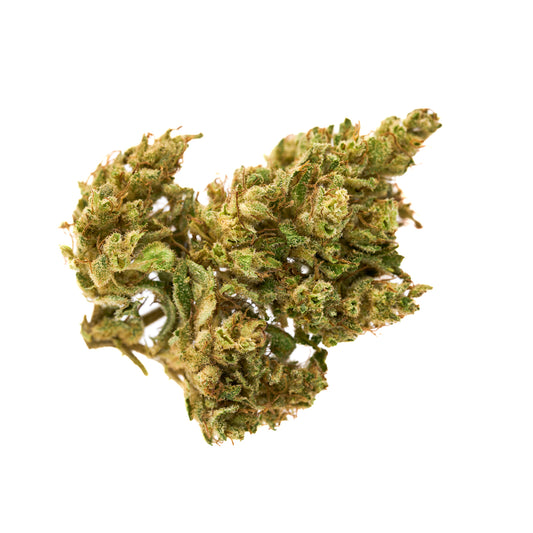
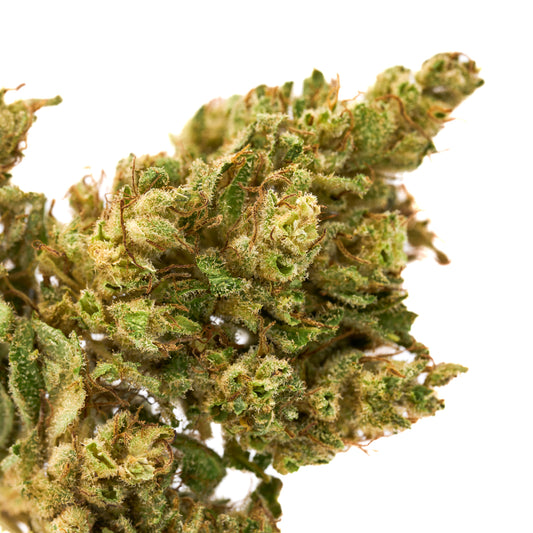
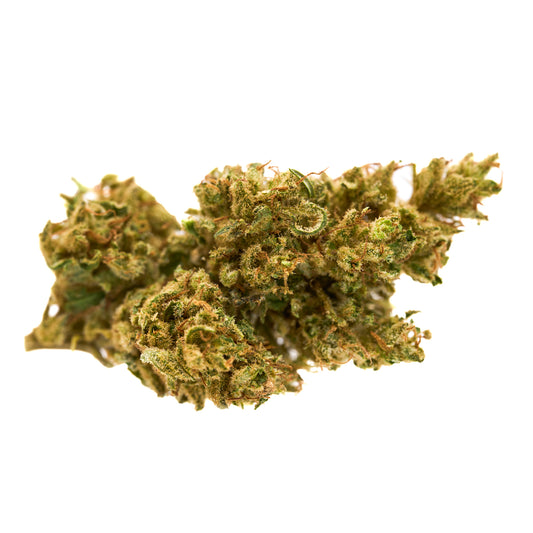
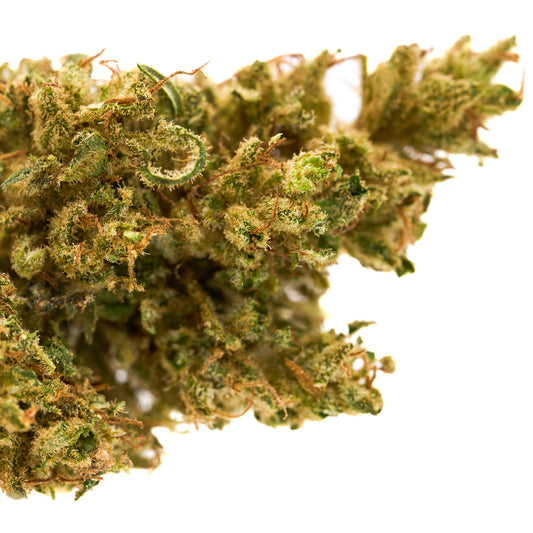
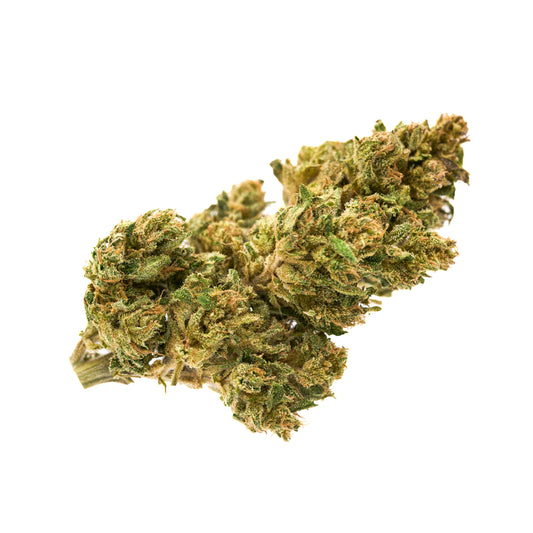
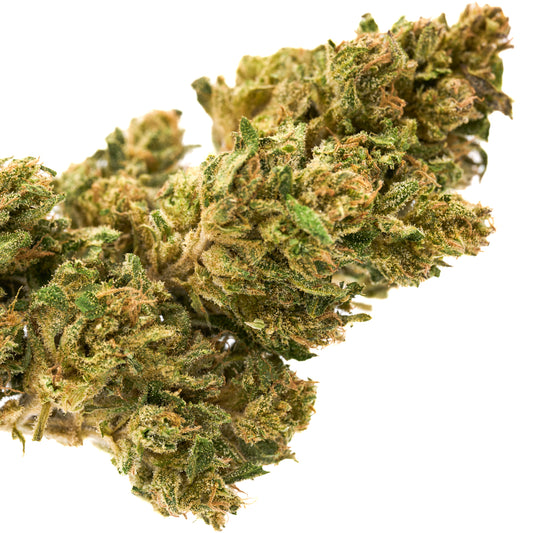



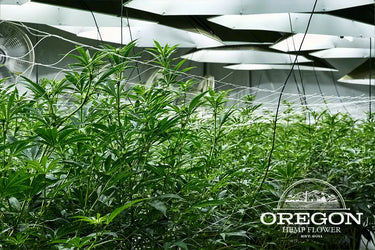

Leave a comment
Please note, comments need to be approved before they are published.